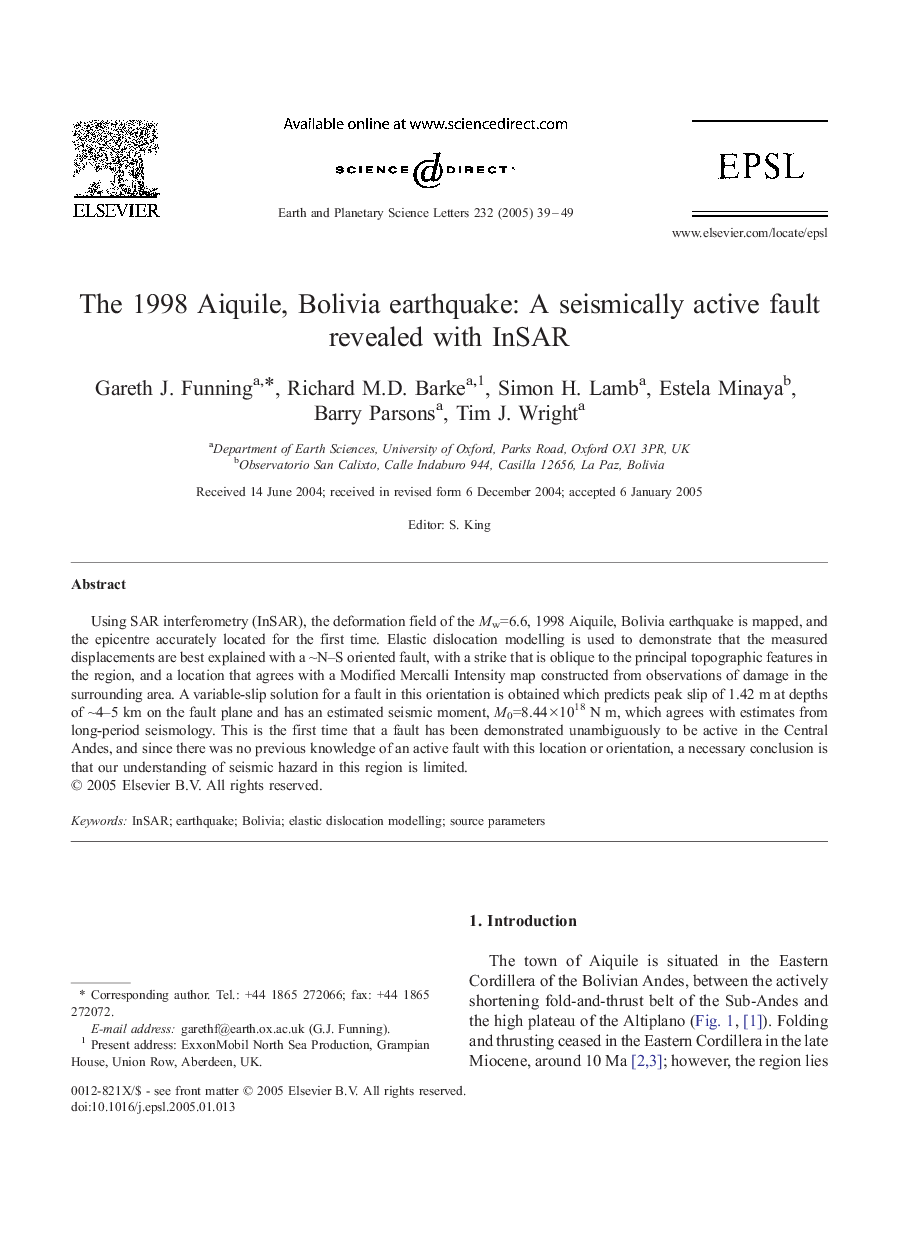| Article ID | Journal | Published Year | Pages | File Type |
|---|---|---|---|---|
| 9522706 | Earth and Planetary Science Letters | 2005 | 11 Pages |
Abstract
Using SAR interferometry (InSAR), the deformation field of the Mw=6.6, 1998 Aiquile, Bolivia earthquake is mapped, and the epicentre accurately located for the first time. Elastic dislocation modelling is used to demonstrate that the measured displacements are best explained with a â¼N-S oriented fault, with a strike that is oblique to the principal topographic features in the region, and a location that agrees with a Modified Mercalli Intensity map constructed from observations of damage in the surrounding area. A variable-slip solution for a fault in this orientation is obtained which predicts peak slip of 1.42 m at depths of â¼4-5 km on the fault plane and has an estimated seismic moment, M0=8.44Ã1018 N m, which agrees with estimates from long-period seismology. This is the first time that a fault has been demonstrated unambiguously to be active in the Central Andes, and since there was no previous knowledge of an active fault with this location or orientation, a necessary conclusion is that our understanding of seismic hazard in this region is limited.
Related Topics
Physical Sciences and Engineering
Earth and Planetary Sciences
Earth and Planetary Sciences (General)
Authors
Gareth J. Funning, Richard M.D. Barke, Simon H. Lamb, Estela Minaya, Barry Parsons, Tim J. Wright,
